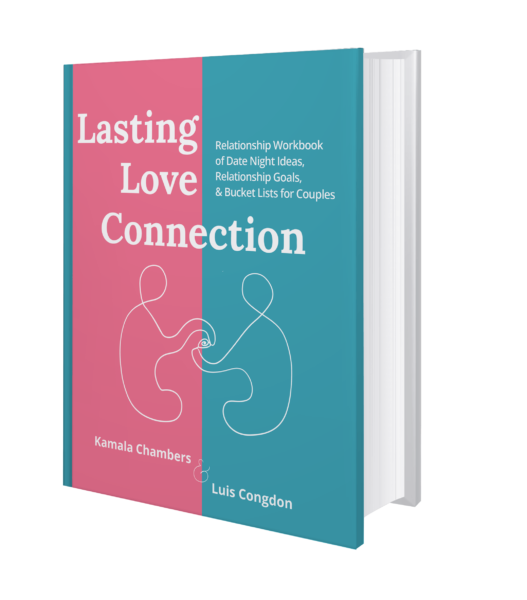If you find yourself in an unhealthy relationship you can’t seem to leave, chances are you’re experiencing the 7 stages of trauma bonding.
This article discusses the trauma bonding definition and the 7 stages of trauma bonding in a relationship pattern. The seven stages are love bombing, getting you hooked and gaining your trust, shifting to criticism and devaluation, gaslighting, resignation and submission, loss of sense of self, and emotional addiction.
Abusers know how to make their victims feel loved and desired but can quickly switch gears to be cruel. They repeat the trauma bonding process to keep their victims hooked.
Table of Contents
What is trauma bonding?
Trauma bond definition: A trauma bond occurs as a psychological response when an abused person develops an unhealthy attachment to their abuser. The abuser is there to make the abused person feel better after they’ve caused harm, thus bonding the abused to the abuser. One of the significant signs that you might be engaging in trauma bonding is when your partner alternates between poor treatment and positive experiences.
The result is trauma bonding, meaning the abuser flip-flops because they are conditioning you to crave their approval. So what’s trauma bonding? Relationship Trauma Bond: meaning when an abused person is attached to their partner due to an emotional or physical abuse cycle.
What is a trauma bond relationship?
In a trauma bond couple, the abuser is an expert at manipulation. They know how to make you feel loved and desired. But they can switch gears, make you feel like you’re the worst person on earth, and start being cruel. The abusive partner repeats the trauma bonding process to keep you hooked. Abusers want power and control over their victims, and they know that the best way to get that is by trauma-bonding them into submission.
If your partner is constantly changing from loving and kind to cruel, this is a sign that you might be in a trauma bond relationship. Going through a stressful event with another person can bond you, even if they are the person who causes it. Such a bond can leave you feeling like you can’t live without your partner, making excuses for their behavior and feeling trapped.
10 signs of trauma bonding
1. You feel like you’re going crazy.
2. You’re the only one who sees the situation for what it is.
3. You feel like you’re in love with your abuser.
4. The abuser makes you feel special and appreciated when they’re sweet to you and then switches gears and makes you feel like you’re the worst person on earth when they start being cruel.
5. The abuser controls aspects of your life, such as your schedule or who you spend time with.
6. The abuser begins to criticize you and make you feel worthless.
7. The abuser manipulates you into doubting your memories and own perceptions, making you believe you are crazy.
8. You give up trying to please the abuser and resign yourself to the abuse.
9. The victim loses all sense of identity and feels dependent on the abuser.
10. The victim becomes emotionally addicted to the abuser and can’t imagine life without them.
Emotional abuse can create trauma bonding
Emotional abuse is different from physical abuse. Someone with emotionally abusive behavior will find ways to target your self-esteem, put you down, belittle or threaten you. They will have little to no regard for the other person’s feelings.
Or they may find ways to intimidate you and make you feel inferior. For example, emotional trauma can make you feel like you’re not good enough and deserve to be mistreated.
Extreme emotional manipulation can create trauma bonds in a relationship, as the abused person becomes attached to their abuser to receive validation and approval.
Dealing with a narcissist trauma bond
Few people in your life may understand what it’s like to be trapped in an abusive relationship with a narcissist. Narcissistic abuse may leave you feeling like you’re going crazy and that you’re the only one who sees the situation the way you do.
A trauma bond in a narcissistic relationship pattern can be challenging to detect. It is caused when a narcissist demands love and validation.
Narcissistic abuse conditions you into feeling that the toxic relationship is normal behavior – even if it’s not healthy or positive for either party involved.
Cognitive dissonance is a psychological term that describes a mental conflict when our beliefs and actions differ. This can be a problem for people in abusive relationships with narcissists because their partners might do things that go against what they believe in, like yelling or hitting. This can lead to a lot of inner conflict.
In this interview, we talk about some of the 7 stages of narcissistic trauma bonding
What are the 7 stages of trauma bonding?
Knowing the 7 stages of trauma bonding in marriage or romantic relationships is important because it can help you understand why you feel like you can’t leave an unhealthy relationship. If you know what to look for, you might be able to spot the 7 stages and get out before it’s too late.
Stage 1: Love bombing.
Love bombing is when the abuser showers the victim with excess love and attention, making them feel special and appreciated.
When someone love bombs you in the early stages of being with them, it feels really good at first. They make you feel special and appreciated. The connection feels deep and genuine.
If you experienced trauma or neglect as a small child, love bombing can feel like the greatest love you’ve ever known.
But this kind of love can be harmful. It’s a way for the abuser to control you and keep you under their control.
With love bombing, you’re pedestalized.
When your partner pedestalizes you, you’re expected never to make mistakes. You’re also not seen as an individual – only as someone who is there to meet people’s needs.
Being put on a pedestal can harm your relationship because it’s unrealistic. No one is perfect, and you need to be accepted for who you are – instead of the perfect person they want you to be. You’re not allowed to be yourself when put on a pedestal.
Additionally, being pedestalized can make you more vulnerable to psychological abuse.
Because you are loved bombed and probably feel more loved than you ever have, you may not want to believe or accept the abusive things your partner is doing. The love bombing phase can create destructive attachments that keep you in the relationship longer than you should stay.
Stage 2: Get you hooked and gain your trust.
An abuser will try to get you to trust them. For example, they might start controlling what you do or who you spend time with as a way to “keep you safe.” Isolation is a way they can keep abusing you and make you think it’s normal.
As an abusive relationship progresses, the abuser starts to control aspects of the victim’s life, such as their schedule or who they spend time with.
An abuser might start to control your finances, too. For example, they might give you an allowance or tell you what you can and can’t spend money on.
Stage 3: Shift to criticism and devaluation.
In the normal progression of a trauma-bonded couple, the abuser starts criticizing the other to make them feel worthless gradually.
In a trauma bond, an abuser will try to destroy your self-confidence because it gives them more power and control over you. Dependency criticism results in you staying because you don’t feel like anyone will ever love you as much.
Abusive people want power over their victims. Emotional neglect and making you feel worthless is one way to do that.
Stage 4: Gaslighting.
Gaslighting is a form of psychological manipulation that causes someone to doubt their memory, perception, and sanity. Abusers often use it to control their victims and make them think they’re crazy.
Abusers gaslight their victims by telling them that they imagine things, are too sensitive, or are just being paranoid.
The abuser might also deny doing or saying something the victim clearly remembers. The denial makes the victim doubt their sanity and makes it more challenging for them to leave the relationship.
Stage 5: Resignation & submission.
In the resignation and submission stage, you give up trying to fix the situation and resign yourself to the abuse.
There can be several reasons why victims resign themselves to the abuse. One reason is that they may feel like they’re not worthy of anything better. They may think they deserve the abuse because they’re not good enough or have made a mistake.
An abused person might say to themselves…
Someone who loved me more than anyone now thinks I’m worthless. I must be a terrible person. I must have done something really wrong to lose that love. Someone finally loved me, and now I messed up so bad that they can’t love me anymore. It’s my fault.
Victims may also feel like they’re not able to leave the relationship. They may fear their abuser. Or feel they don’t have anywhere to go since the abuser has isolated them from others. Abusers often use threats and intimidation to keep their victims from leaving.
You may also feel like you’re the only one who can help your abuser. You might think that if you leave, the abuser will end up worse off. Wanting to help the abusive person at your own expense is known as rescue syndrome, and it’s a way for the victim to try and maintain control of the relationship.
A person with rescue syndrome might say to themselves…
I did all this work to help them. They are hurting. If I leave them, they will end up worse off than before. I need to stay so I don’t hurt them. I only want to help them.
Stage 6: Loss of sense of self.
The victim loses all sense of identity and feels dependent on the abuser.
People often lose themselves in abusive relationships because they have low self-esteem and believe they deserve the abuse.
When an abuser makes you feel worthless, it’s easy to start believing that you’re not good enough and that the abuse is justified.
The things you were once interested in, the people you cared for, the things that brought out your true self, get replaced by the desires of the other person.
You may also feel unable to leave the relationship, making you feel trapped and hopeless.
Stage 7: Emotional Addiction.
The victim becomes emotionally addicted to the abuser and can’t imagine life without them.
You can feel like you can survive without the person.
You are addicted to the brain chemistry attached to the anticipation and traumatic bonding. Emotional addiction causes you to stay in an abusive relationship, even though it is harmful.
The chemicals released during this time are similar to those released with alcohol or drug addiction.
Emotional and drug addiction are similar because they make it so the brain craves dopamine. However, they are also different. Emotional addiction can be to a person, while drug addiction is an addiction to a substance. Emotionally addiction is characterized by clinging to the abuser and struggling to let go, while drug addiction involves cravings and withdrawal symptoms.
The signs of emotional addiction to an abuser
- Having a hard time thinking about life without the abuser.
- Feeling like you need the abuser to survive.
- Fearing for your safety if you leave.
- Trying to make excuses for the abuser’s behavior.
- Making excuses for why you stay in the relationship.
- Feeling like you’re not good enough without the abuser.
Trauma bonding test – Are you trauma bonding?
The following questions will help determine if you are in a trauma bond relationship. If you answer “yes” to any of these questions, you are likely experiencing trauma bonding within your relationship.
- Do you feel like you’re going crazy?
- Do you feel like you’re the only one who sees things the way you do?
- Does your partner make you feel special and appreciated and then switch gears and make you feel like you’re a terrible person?
- Has your partner isolated you or cut you off from friends and family by creating problems between you?
- Does your partner control aspects of your life, such as your schedule or who you spend time with?
- Does your partner criticize you and make you feel worthless?
- Have you given up trying to please your partner and resigned yourself to abuse?
- Does your partner manipulate you into doubting your memory and perception, making you believe you are crazy?
- Have you lost all sense of identity and become entirely dependent on your partner?
- Do you feel addicted to your partner cutting you down so they can build you back up again?
If you answered “yes” to any of these questions, there is a chance you are experiencing a trauma bond with your partner.
The stages of trauma bonding can be difficult to break, but it is essential to remember that you are not alone and there is help available. If you are ready to take the first step, reach out to a support group or counselor who can assist you in exploring your options and helping you to find a path forward.
If you’re in danger, reach out to the National Domestic Violence Hotline: The Hotline.
The repeated cycle of trauma bonds
Unfortunately, the 7 stages of trauma bonding can continuously loop in your relationship. If you feel stuck in any of the trauma bond stages, it can be extremely hard to stop fights, feel appreciated, and break out. But there is hope.
How to break the 7 stages of trauma bonding
If you’re in an abusive relationship, there are ways to break free from the cycle of trauma bonding and reclaim your life.
When breaking trauma bonds, the most important thing is to get professional support to offer an objective perspective which can be extremely helpful to resolve conflicts. Support can be from a therapist, relationship coach, or marriage counselor specializing in helping your relationship repair from abuse.
Talking about your experiences and feelings can begin your healing journey to a new life and give you the tools you need to repair your relationship.
Ways to break free from the 7 stages of trauma bonding
- Connect with a good friend and positive people who will support you and model what healthy relationship dynamics look like.
- Take care of yourself emotionally and physically. Self-care and self-love exercises include relaxation techniques, creativity, and healthy eating.
- Find an activity or hobby that brings you joy and good feelings.
- Put your own needs first for once – This is the ultimate act of self-care.
- Try mindfulness practices of observing your own thoughts or noticing how your inner child is dictating situations.
- Get help to be completely honest with yourself and others to break the unhealthy patterns in your relationship.
- Start building healthy patterns such as open communication and regular relationship check-ins
Breaking free from a toxic relationship pattern in a relationship may not be easy, but it is possible. With help and support, you can start to heal the damage done and build a healthy, happy life.
If you find yourself in a relationship that resembles the stages of trauma bonding, it’s essential to seek help from a mental health professional and trusted loved ones. Know that you don’t have to repeat this pattern with this person anymore. Trauma bonding can be a complex cycle to break, but it is possible with the right support.
Sign up for the Save Your Marriage Course today.







Great read, very informative and enlightening!